Joe Beardsmore – Organic Light
Posted on September 9, 2024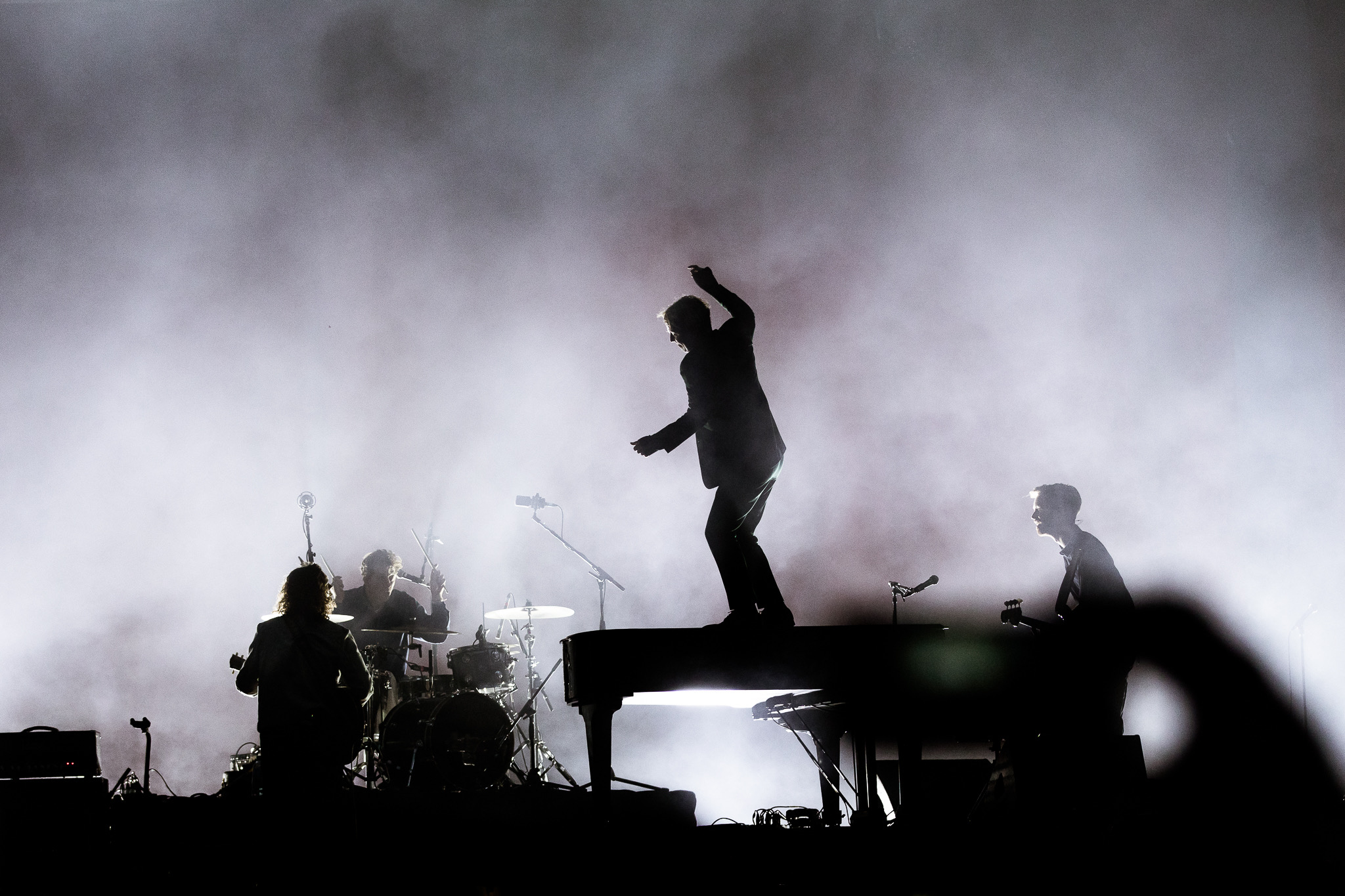
There is a magical space between the artist on stage and the audience where the two meet. It is at this point where fans reach out and embrace the artist’s vision as they embark on a journey together. Setting the tone for this transformative experience with light and shadows runs through the heart of this UK designer’s creative vision.
Known for his evocative work for artists like Tom Odell, Richard Ashcroft, Anna Calvi, and David Gray, Joe Beardsmore engenders a sense of intimacy between artist and audience by keeping his designs as natural as possible. He tends to avoid front light, preferring instead to engage with more subtle light angles. LED screens are also minimized in his designs. And in a world where cell phones are a common sight at concerts, he strives to create designs that result in a more organic, live experience.
Beardsmore began his career in theatre, where he developed his performer-centric approach to design. Over the years, he has pursued a variety of different approaches, including bolder designs for arena/festival shows, as well as events, such as the Dubai Festival of Light and Volvo Ocean Race, in addition to corporate projects.
We caught up to Beardsmore at his Phosphor studio in the Cotswolds to discuss the power of organic light.
 In your recent Tom Odell Black Friday tour, you relied minimally on front light. Can you tell us a bit about why you took this approach?
In your recent Tom Odell Black Friday tour, you relied minimally on front light. Can you tell us a bit about why you took this approach?
“I think the gains of minimizing front light are massive in terms of creating suspense and emotion — it’s a great method of lighting to build into a song, adding in some front light for vocals but emphasizing colour and depth from rear or overhead lighting before that.
“Also, I work with a lot of artists where there is a focal person, Tom Odell, Richard Ashcroft, and David Gray, I think this allows me some extra creativity to not light other band members, or only light them dimly. In these, cases, I tend to only use frontlight in either a warm or a cold colour. I don’t normally use any saturated colours from the front, but I did experiment recently with one Tom Odell song with red front light, this worked well as a one song hit. I also tend not to use any follow spots, sometimes I add in a remote controlled front truss a spot or two, but I hate flat spotlights coming down the length of the room.”
Looking at this from another perspective, is anything lost when deemphasize front lighting?
“I hope not! But I have to be coconscious of the design decisions I make. Tom recently has taken a big jump in venue size, and where in a 3000 capacity venue I would have him lit maybe at 5-10%, but now for someone to see him at the back of a 10,000 capacity venue I have to light him more.
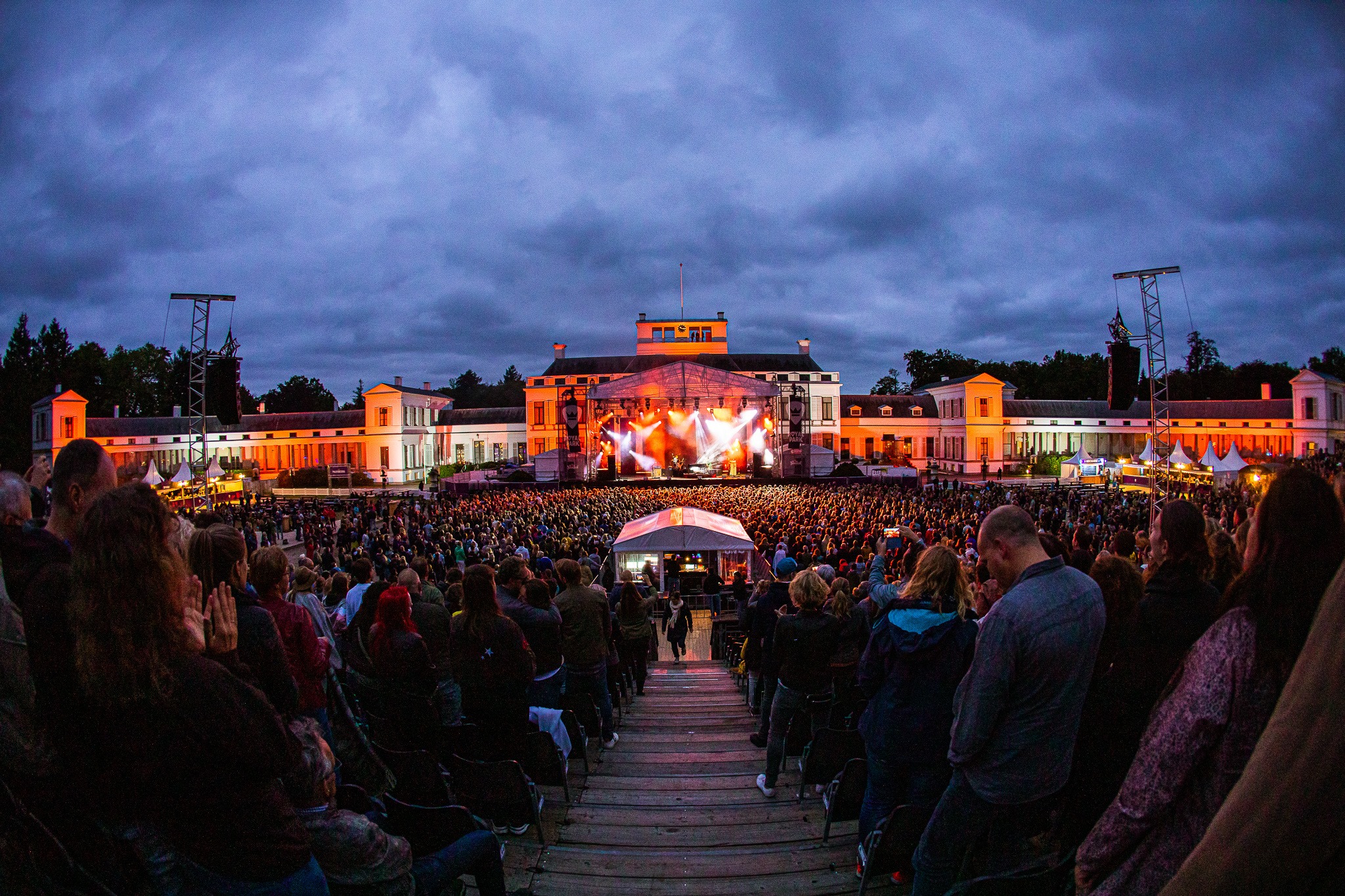
“This also makes my life at times really hard when dealing with IMAG screens, when it’s so dark on stage, some directors really struggle to get shots. As an overall show designer, I have some tricks to help combat this. I tend to do a lot of black and white IMAG where the majority of the screen can be black and the shape of the artist can pull through in white.
There is also the current world of people watching an entire show through the periscope of a mobile phone screen. Making a ton of content that your artist can be tagged in and see, you have to ask, do you design a show for the thousands in the room or thousands watching clips?
I believe these are two different audiences which if you were designing just for Instagram, you would do what some designers do and keep the stage fully lit and looking massive all the time, so every photo or video looks massive. I believe in the opposite to bring the audience along with you on a journey following the music peaks and troughs.”
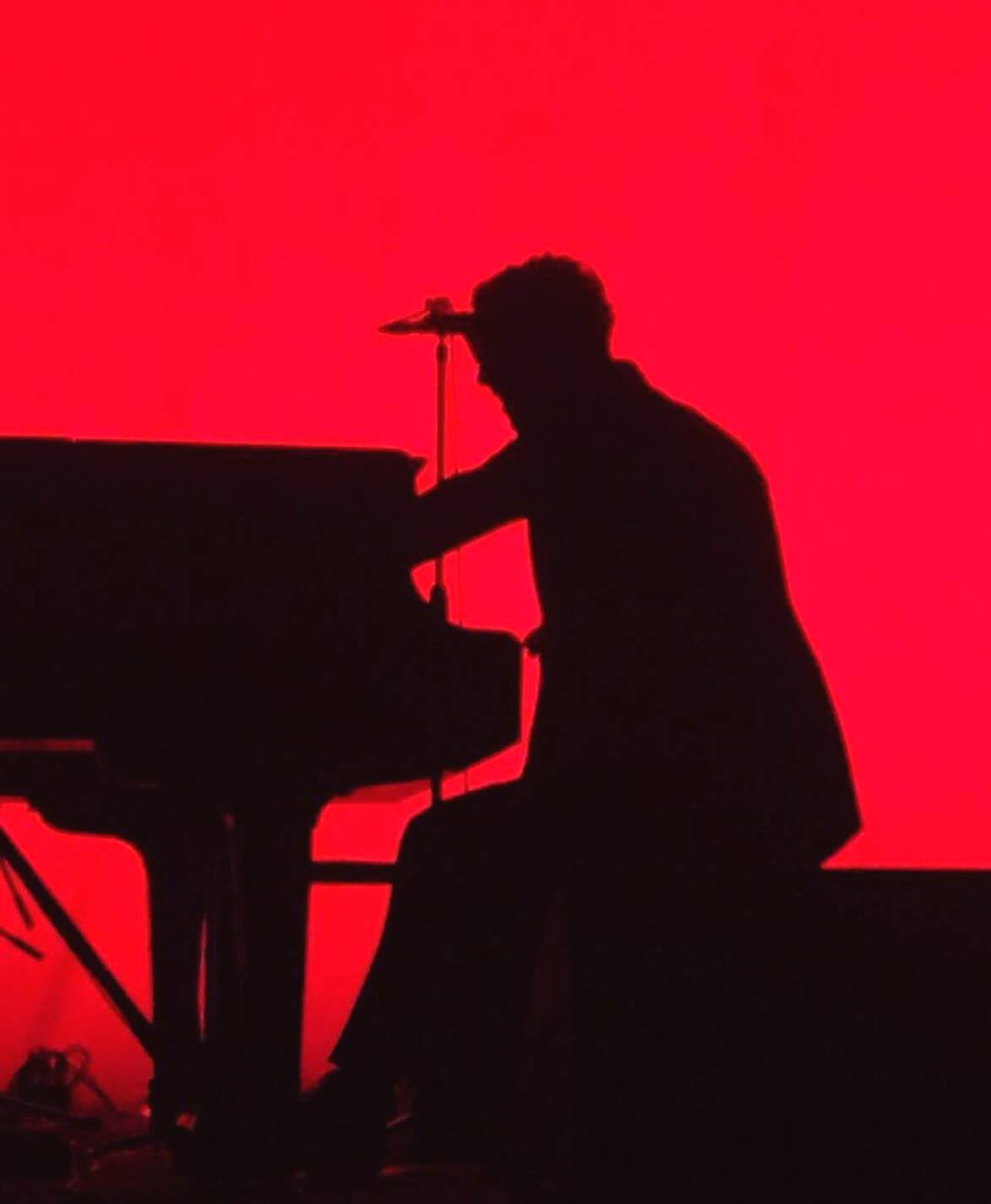
You busked very brilliantly on the Black Friday tour. What is the most rewarding and the most challenging thing about busking?
“I love to busk a show. I do think it’s really rewarding. I do believe that I am basically playing an instrument with some of my artists. It has a really strong connection to the stage even when your 30m away.
“In my view, this is a skill that is disappearing, but that goes hand in hand with so many artists who are now tied in to click track, or backing track. The skill of busking allows the band the freedom to be creative, they can read a room and play along with the crowd and their feelings.
“I am not averse to timecoding. Some of my shows are coded or partially coded. The creative process of making those cues, I love — but if I am on the road then I would much prefer to be creative every night, and allow the show to evolve.
“As I start to get more shows covered, I think I might have to try and do some more timecode integration, so that a lighting director can look after a show more easily.”
How does the creative process begin when you sign on to do a show? How do you get yourself in the “head space” to take what your client is saying in music and reflect it in light?
“The creative process is something I wish I could explain. I wish I knew where I could find the switch to just turn it on and be in the zone. Overall, I think I take inspiration from nature or things I see in the world. Sometimes, I just see something that triggers me. I then tend to make some terrible pencil drawings or notes. These might be specific to an artist, or just things I like that maybe I can bring into a design”
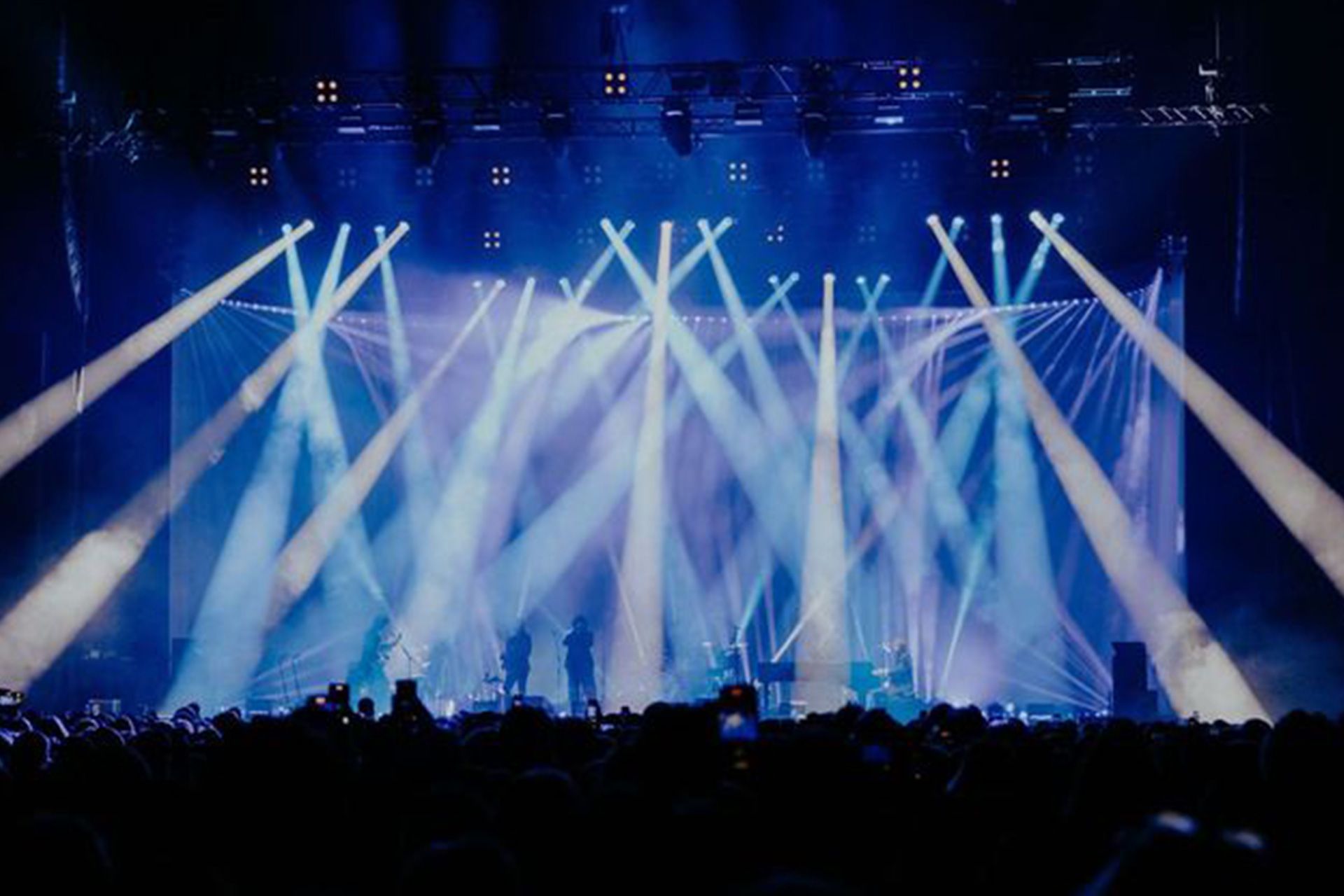
“Musically when I begin to work with artists, I have to listen to their music continually until it starts to annoy me! When I know what’s coming before it comes then I know I am in a place where I won’t worry when I do a show. Ideally, I like to get a live recording of the band, so many albums are different from what the artist is like on stage
“I can’t explain exactly how but I start to visualize lighting cues in my head, or how to change the dynamic on stage. Nor can I explain which songs musically bring me emotion and how to accent those feelings through lighting, video or staging to allow the song to grow.”
You’ve been collaborating with some of your clients for some time. What is the key to developing a good long-term relationship with clients?
“I would love to ask them this exact question. I do feel that with my artists they know I care, maybe too much at times, but when I am working with them, they are my focus, I want their show to be amazing. I hope that energy rubs off onto them.
“I would like to think that I have also proved to them that I have the skills to redesign and move things forward. I think they know that I will have more ideas and that I have not given them everything. I also feel that I have a good personality on tour, I am happy to get stuck in, if people are struggling. I won’t hang them out, I will help them, be that doing a full load in or opening some CAD and helping a production manager.”
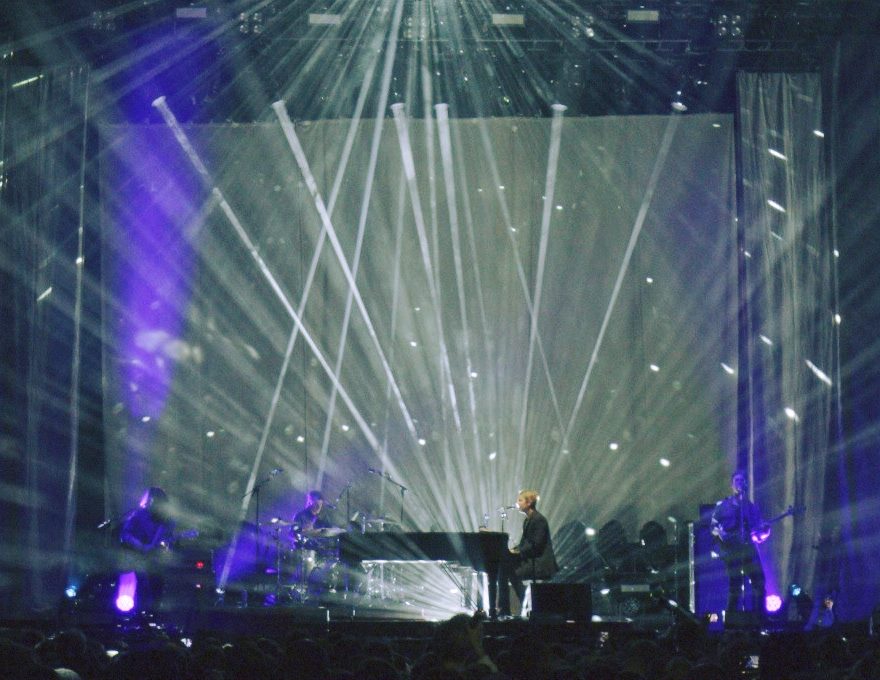
Do you have to like a client’s music to do a good job lighting it?
“I don’t think so, but it helps, I have worked with artists where maybe I don’t like their music when I first listen to it, but I will always end up enjoying it. Also, I think when you meet people, you start to learn their story, and when you know them personally you become much more open to their music.”
You have a background in theatre and set design. How does this inform your lighting?
“I think that its key to all my design, I seem recently to be moving to use those skills more and more and do overall show design, To me the whole show is the key. If I do an amazing lighting design but the band layout is bad, or I don’t leave them space to perform because I fill it with lights then the amazing lighting design is pointless.
“I think my theatre background has added to this feeling. Everything has to be integrated to achieve something fantastic, and If I can lead that and make those decisions then that make me happy.”
On the subject of theatre, do your design follow a narrative in the sense that they unfold or evolve as the show progresses?
“This depends on the show, but I hope so — I try to make sure that there are peaks and troughs, and the feeling of scene or location changes through a show. Musically, I also like this with a lot of my artists they will also do a solo section of a show, be it a couple of songs or more, I am a massive fan of crafting a show which starts with a solo song, and ends with a solo song.”
“I think it’s an amazing thing when you can do a song maybe with only two lights on a single artist and engage a room of thousands of people with their every word, where the only focus is the musician and their vocal and instrument.”
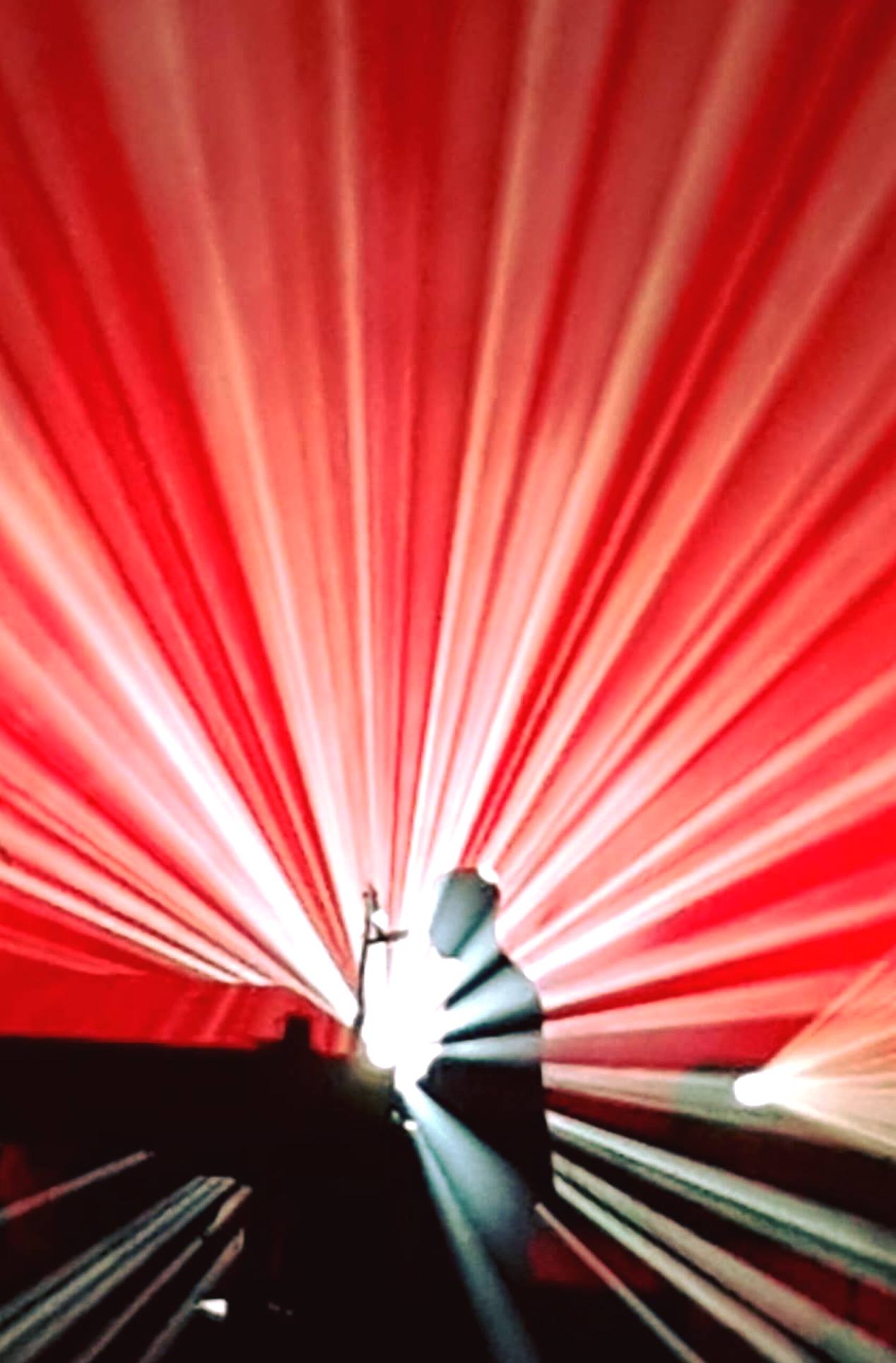
Sihillouetes and dark space play prominent roles in many of your designs. How would you describe what they add to a show?
“They add depth and feeling to a show. Darkness is such a powerful tool.”
This question goes hand in hand with the one we just asked, how do you not overuse it,
“I think I try to have the balance correct but it’s the extremes that work for my design, lighting some songs with maybe only two fixtures as the smallest moments in a show, and then having moments where there might be hundreds of lights on, really bright.
“To me, the difference between the two is the key — if the big is massive and the dark is tiny there is a massive scale to work in the middle to fit songs into. I love to be able to see a photo of one of my shows and know in a second what song on because every song in a list of 30 is unique.”
Your shows have a very artistic quality. Is there any painter from the past who you think would have been a good lighting designer if that artist were around today?
“Great question, I would have to say Leonardo da Vinci. He would be all over creating amazing sets and I am sure he would do some amazing things to integrate lighting into some of his work.”
Earlier, we mentioned minimizing front light. You use a lot of different angles of light. Can you give us an idea of what sort of mood you want to convey with different light angles? In other words, do side and back lighting convey different emotions for you?
“Possibly, I don’t think its specifically the lighting angle that creates mood, it’s the mixture of lighting angle, position, brightness, colour and texture — and then doubling or tripling down on that, bringing multiple lights in from angles and mixing them to get a great depth of emotion.
“Pulling a dark blue side light in can make something feel dark and moody to start. The if you mix that in with a rear break-up gobo kicking through someone can will brighten that mood and lift the emotion. Then you can balance that with a CTB downlight, blend between those three fixtures. I would say that doing this will easily result in dozens of feelings.”
You tend to incorporate quite a few subtle effects into your shows. Yet, some shows are becoming more forward with large video walls and set pieces. What is your thinking about that?
“I think for arena and stadium shows, it makes sense, since you’re trying to make sure that everyone has a great experience where ever they sit or stand.
“David Gray had quite a large video element with his last tour, five columns of LED screen, rather than just one big screen. I think this is the way I would continue to use video.
“As Tom Odell has bigger arena shows coming up, I have the next element of his design standing by to add video in, I want to use projection for this onto the scenic drapes that we already have, this should feel a lot softer, it also will allow me to turn the video off.
“LED screens are so harsh. They are great for some things but I feel like it needs softening to suit my design style, using gauze or mesh to break it up.
“My current Richard Ashcroft design has a video element ready to go at festivals to take cameras and some content onto a house LED screen. This is great. simple and effective. So, I can see why so many people use it.
“I do just look at some of the smaller shows and the budget that is spend on video, and I don’t feel that its good value for money, content creation is so expensive so a lot of smaller shows have just stock content which has no real feeling or link to the show, I feel on these it would be better to think of using the budget for scenic or lighting effects.”
How and why did you get started as a lighting design?
“I started being interested in lighting when I was high school. I remember operating follow spots for a school production of Pink Floyd’s the wall when I was about 14.
“I did work experience doing lighting for a massive trade show over in Munich, pushing to find something interesting, Then I went into A levels at school and didn’t have any desire to be there, so needed to find a different direction after a year. I found myself a college course in production arts, while doing that for two years I just picked up as much work experience as I could. Luckily, the college course was much more like an apprenticeship working unpaid in a theatre with little written work and it suited me. Then I have moved through smaller theatres onto live events and to where I am now.”
Looking back at your career, are there one or two shows that really stand out as being the most pivotal for you as a lighting designer – either because you learned a valuable lesson or gained a new sense of confidence or purpose?
“I would say Rudimental at the 02 arena in London, I was the associate designer on that tour, and I operated the video at festivals where there was an LED screen from my laptop. For that tour I was just there as a tech and to program the main LD, Jonny Gaskell was operating the show. Two days before the 02 I got called on the radio to go to production, where Jonny, the TM and PM were all sat there, first thought was what have I done wrong!
“But it turned out our video supplier had been purchased by another company and as part of the purchase they had managed to wipe all the contents and timecode off their media servers. So could I do the biggest show the band have even done live.
“At the time it was one of the most stressful days of my life, had a full lighting load in, operated the lights for the 2 support bands, live operated the video on a midi trigger off my laptop for the headline 18,000 people and then had to do a load out!
“But looking back at it now, if I am ever struggling, I know that nothing can be as stressful as that and that I got through that and it looked amazing.”
What is the one thing you want people to know about you as a lighting designer?
“Just that I am always open for a chat or a discussion to assist anyone’s show, be that an artist looking for a new design or a designer looking for some guidance.”